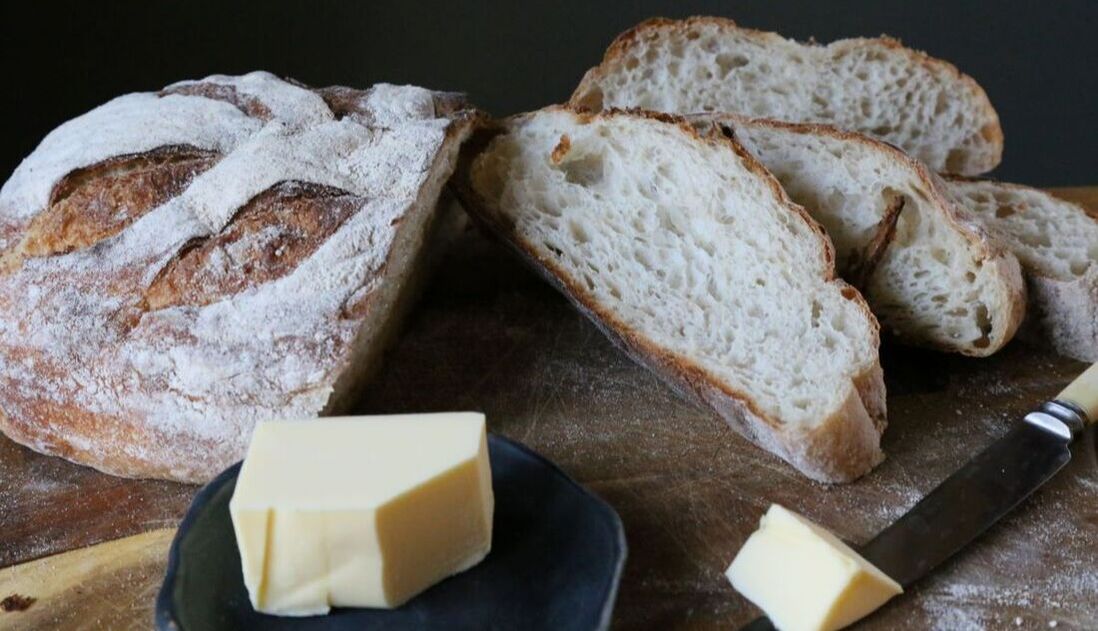|
Potato Bread (Makes 1 large loaf, 2 small or about 8 rolls)
For the potato: 300g potatoes (peeled weight) 280g water For the dough: 300g above cooked potato, riced or mashed 350g strong bread flour 180g above potato water 6g fresh yeast (or 3g instant dried yeast) 8g fine sea salt Method First cut your peeled potatoes into rough chunks, about 2cm cubes. Place in a pan with about 280ml of water and bring to the boil. Boil for about 15 minutes until just tender but not falling apart. Drain and reserve the potato water. This starchy liquid will be used to make your dough beautifully soft. When cool, either mash your potatoes or place through a potato ricer. Now place your potato and starchy water in a bowl or mixer. Add the flour, salt and yeast, ensuring the yeast is kept separate from the salt, at least initially. Mix with your scraper until all ingredients are combined and a rough dough has formed. Turn out onto your work surface and knead for 15 minutes or so, until you have an elastic dough which doesn’t stick to the work surface or your fingers. Alternatively, knead in your mixer, using the dough hook attachment for approximately half the time. Form the dough into a ball and place back into your lightly floured bowl. Cover with a large plastic bag or a baking cloth and leave to rest for 30-40 mins. Now it’s time to fold and stretch your dough: using your scraper, turn the dough carefully out onto a lightly floured surface – with the ‘top’ of the dough now underneath. Taking the 4 points of the compass in turn, pull the dough gently outwards then bring over to the middle point of your dough (as if you were making a paper windmill). When all 4 ‘corners’ have been brought into the middle, turn your dough back over and place back in the bowl, so that the ‘top’ of the dough remains uppermost. Rest, covered, for a further 20-30 minutes so the dough can relax again. Now, you are ready to shape your dough ready to place into a tin, a proving basket or into rolls. Carefully tip out the dough onto a lightly floured surface. Turn the dough back over so that the ‘top’ of the dough is now uppermost. Divide into portions for rolls or loaves, then shape into a smooth ball, or oval if baking in a tin. Be gentle with this dough and don’t be too worried about tightening your chosen shapes, as this soft, tender dough is easy to tear. Feel your way and be guided by your dough. If shaping your dough in an oval to fit a tin, remember to grease your tin before placing the shaped dough inside, with the seam concealed neatly underneath. Cover your loaf/loaves/rolls whilst they prove for a second time for 45-60 minutes until they appear nicely ‘bloated’ and are approximately double in size. Preheat your oven to 240°C. When the dough is ready (slowly springing back when you prod gently with a floury finger), place into your hot oven. Spray around the floor and walls of the oven to create steam then quickly close the oven. Turn down the oven to 220°C and bake until golden brown on top and bottom. Rolls will take 12-15 minutes, a small loaf will take about 25-35 minutes and a large loaf, 40-45 minutes. If you have a probe thermometer, the bread is cooked when the centre of the loaf reaches 95°C. |
Our workshops are run by award-winning sourdough baker Helen Underwood.
Categories
All
Archives
November 2023
|


